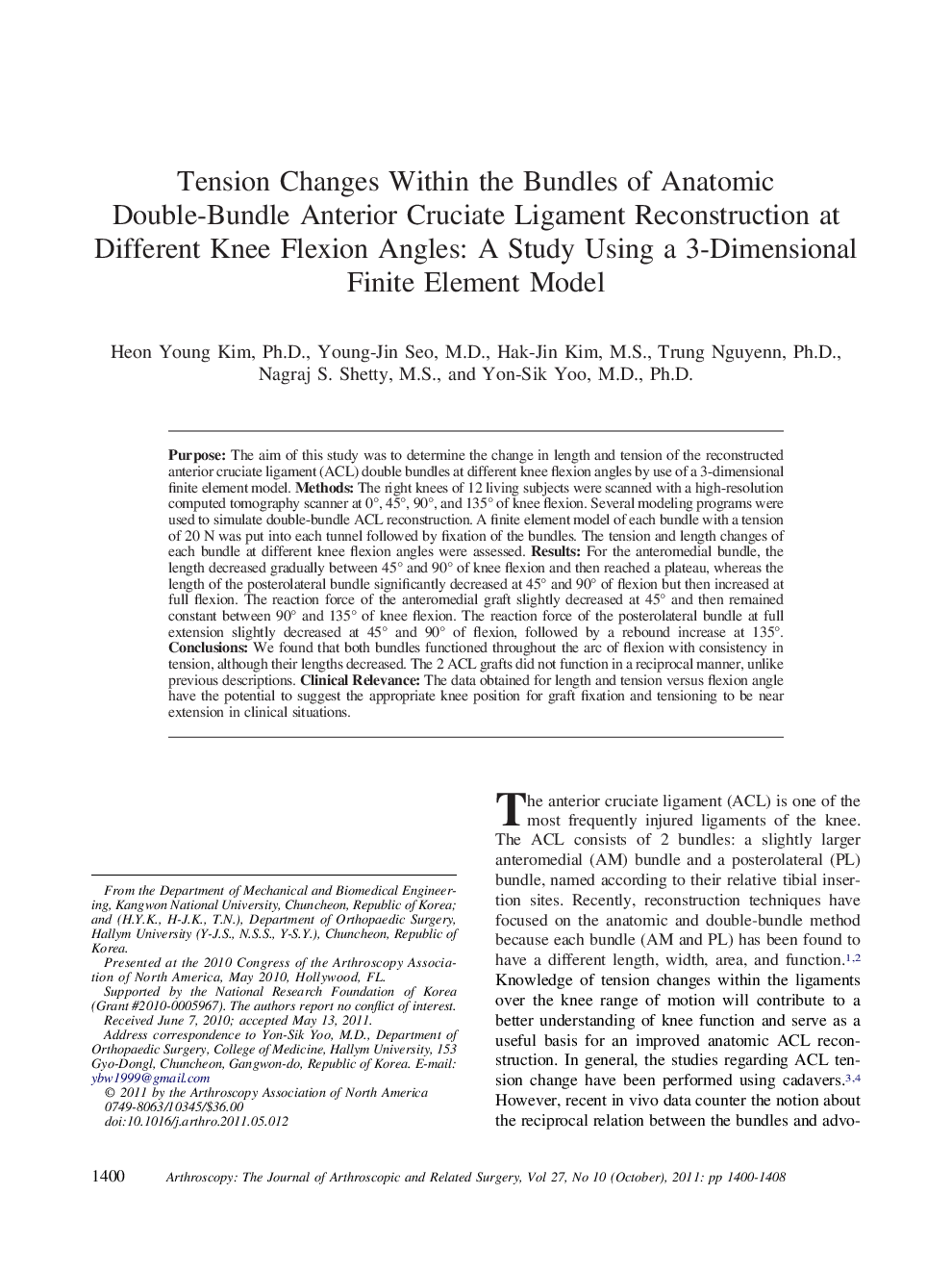| Article ID | Journal | Published Year | Pages | File Type |
|---|---|---|---|---|
| 4044430 | Arthroscopy: The Journal of Arthroscopic & Related Surgery | 2011 | 9 Pages |
PurposeThe aim of this study was to determine the change in length and tension of the reconstructed anterior cruciate ligament (ACL) double bundles at different knee flexion angles by use of a 3-dimensional finite element model.MethodsThe right knees of 12 living subjects were scanned with a high-resolution computed tomography scanner at 0°, 45°, 90°, and 135° of knee flexion. Several modeling programs were used to simulate double-bundle ACL reconstruction. A finite element model of each bundle with a tension of 20 N was put into each tunnel followed by fixation of the bundles. The tension and length changes of each bundle at different knee flexion angles were assessed.ResultsFor the anteromedial bundle, the length decreased gradually between 45° and 90° of knee flexion and then reached a plateau, whereas the length of the posterolateral bundle significantly decreased at 45° and 90° of flexion but then increased at full flexion. The reaction force of the anteromedial graft slightly decreased at 45° and then remained constant between 90° and 135° of knee flexion. The reaction force of the posterolateral bundle at full extension slightly decreased at 45° and 90° of flexion, followed by a rebound increase at 135°.ConclusionsWe found that both bundles functioned throughout the arc of flexion with consistency in tension, although their lengths decreased. The 2 ACL grafts did not function in a reciprocal manner, unlike previous descriptions.Clinical RelevanceThe data obtained for length and tension versus flexion angle have the potential to suggest the appropriate knee position for graft fixation and tensioning to be near extension in clinical situations.
